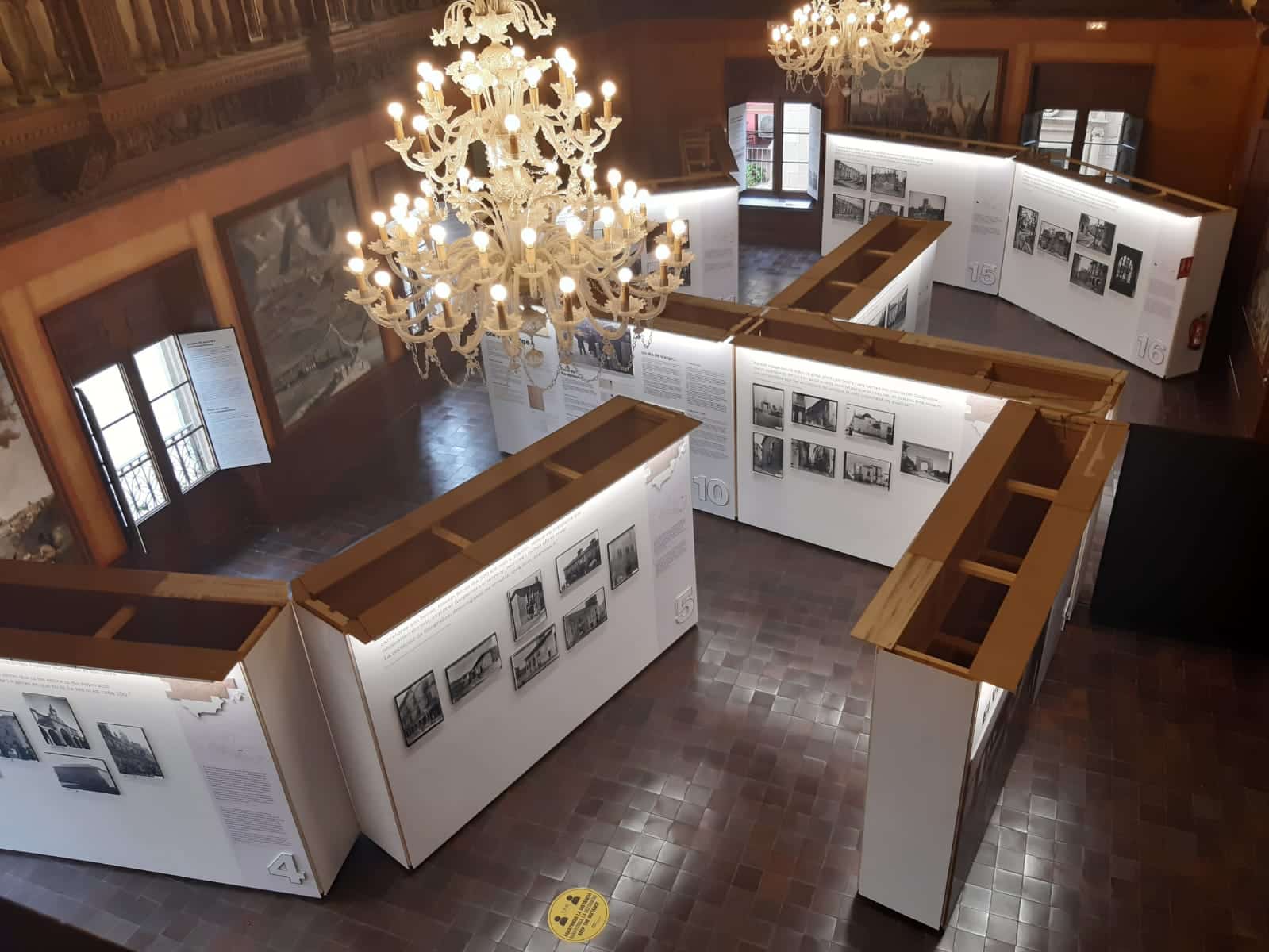A photographic journey. The construction of Poble Espanyol
Don't miss the exhibition "A photographic journey. The construction of Poble Espanyol" about the enclosure's origin and construction process. Delve into the journeys undertaken between 1927 and 1928 by the architects Ramón Reventós and Francesc Folguera, the draughtsman Xavier Nogués and the painter Miquel Utrillo, to collect the information and get the inspiration needed to turn the project into a reality that had to be demolished.
Included in the general admission ticket every day from Monday to Sunday from 10am to 8pm
Dates and schedule:
Opening hours: from 10h to 20h
Exhibition closed from 12 to 20 June
Opening hours: from 10h to 20h
Exhibition closed from 12 to 20 June
Location:
Town Hall (Poble Espanyol's Main Square)
Town Hall (Poble Espanyol's Main Square)
The process of creating an emblematic enclosure in Barcelona
Every day
Every day
The process of creating an emblematic enclosure in BarcelonaA photographic journey. The construction of Poble Espanyol
Don't miss the exhibition "A photographic journey. The construction of Poble Espanyol" about the enclosure's origin and construction process. Delve into the journeys undertaken between 1927 and 1928 by the architects Ramón Reventós and Francesc Folguera, the draughtsman Xavier Nogués and the painter Miquel Utrillo, to collect the information and get the inspiration needed to turn the project into a reality that had to be demolished.
Dates and schedule:
Opening hours: from 10h to 20h
Exhibition closed from 12 to 20 June
Location:
Town Hall (Poble Espanyol's Main Square)
Included in the general admission ticket every day from Monday to Sunday from 10am to 8pm
THE EXHIBITION
WOULD YOU LIKE TO DISCOVER THE INSPIRATION BEHIND POBLE ESPANYOL AND THE CREATION AND CONSTRUCTION PROCESS?
Come and discover the history of Poble Espanyol through a compilation of photographs, letters and drawings that were used to complete the difficult task of choosing the buildings to be represented in order to recreate the true architectural tradition of the villages of Spain.
With this exhibition, housed in the Town Hall in Poble Espanyol's Main Square, you'll get a very special insight; technical, traditional and endearing at the same time - of the process of inspiration and construction that undeniably defined the characteristics of the architectural heritage that you can still see today as you walk around the enclosure.
"A photographic journey. The construction of Poble Espanyol" witnessed the meticulous and historical photographic work that went into designing this emblematic enclosure in Barcelona. A spectacular enclosure where, thanks to its structure and architectural characteristics, history, culture and leisure come together.
"A photographic journey. The construction of Poble Espanyol" witnessed the meticulous and historical photographic work that went into designing this emblematic enclosure in Barcelona. A spectacular enclosure where, thanks to its structure and architectural characteristics, history, culture and leisure come together.
What's Poble Espanyol?
Traveling and walking arround in a matter of minutes from Cordoba to Besalú or from Cangas de Onís to Medinaceli passing through Mallorca, Santiago de Compostela, Cáceres and many other corners of the Iberian Peninsula to discover the popular Spanish architecture from another point of view, is possible. This is the magic of the Poble Espanyol.
Ours is a village built on top of a mountain, Montjuic. And it is exactly this: a village. With its main square and other secondary ones, with streets formed by traditional houses of different styles of Spanish architecture: Romanesque, Gothic, Mudejar, Renaissance, Baroque... And also, gardens, fountains, walls... and even a monastery and a museum!
All of these elements are common to most of the towns in Spain and are perfectly synthesized in the Poble Espanyol in Barcelona. This was precisely the aim of the creators of this site, built in 1929 for the Barcelona International Exposition. In total, 117 buildings that are actually full-scale recreations of other existing ones.

Ours is a village built on top of a mountain, Montjuic. And it is exactly this: a village. With its main square and other secondary ones, with streets formed by traditional houses of different styles of Spanish architecture: Romanesque, Gothic, Mudejar, Renaissance, Baroque... And also, gardens, fountains, walls... and even a monastery and a museum!
All of these elements are common to most of the towns in Spain and are perfectly synthesized in the Poble Espanyol in Barcelona. This was precisely the aim of the creators of this site, built in 1929 for the Barcelona International Exposition. In total, 117 buildings that are actually full-scale recreations of other existing ones.
